
How to Evaluate a Billing Solution for Your Practice
December 14, 2023 | Financial Industry, RIA Resources
Advisors spend an average of two hours working behind the scenes for every hour they spend with a client.1
While much of that time is spent on research and report writing, billing is second only to client prospecting in what takes up an advisor’s time each day.
Selecting the right billing solution can be the difference between a firm that just gets by and one that sustainably grows its AUM. As a fee-based business, you must understand not just how much you’re making, but where and from whom you’re making your money.
The best advisor billing solutions do just this. This blog is intended to assist in selecting the right billing solution, along with features you should consider before making a choice. We’ve attempted to list them in order of priority for your research.
Understanding your needs, wants, and pain points
Before you look at any billing solution, it’s important to take a wide view of your current situation. What platform are you using now? What are your pain points? Are they bad enough to warrant researching a replacement? How do you measure success for your current system?
Once you’ve decided to start searching for new software, there are additional questions. How manual is your billing? What do you need out of a billing solution? What fee structures do you support? What new features would deliver significant benefits to your business? Could your billing process be easily learned by another employee?
As part of a formal evaluation process, you should be prepared to answer the following questions:
Billing requirements
- How many fee schedules do you have?
- Do you bill in advance or in arrears?
- Do you bill monthly or quarterly?
- What and how many exceptions do you need?
- Do you want to accept credit card payments?
Fee structures
- What fee structure(s) do you use (AUM, fixed, hourly, or a combination)?
- Do you have a limit on how many fee tiers you can configure within each fee schedule?
- Do you exclude fees by security type?
- Do you prorate inceptions, terminations and flows based on the actual number of days in a month or a quarter, or do you round to a standard 30 days for monthly fees and 90 days for quarterly fees?
Pain points
- How long does your billing process take from start to finish?
- What are the bottlenecks?
- Is the customer support provided by your current billing provider sufficient?
- Can you successfully exclude the assets that you don’t want to bill on?
Planning for the future
- Is your billing solution scalable?
- Can your billing process be easily learned by another employee?
- Are there any new services that your firm is considering?
- If so, what are the billing requirements?
- Does your billing solution have comprehensive analytical capabilities?
This is by no means an exhaustive list, but provides a starting point for further discussion.
Key features to consider
With a solid understanding of your firm’s billing needs, you’ll be able to better decide which billing solution is best. While every firm is different, we’ve found the following features should be table stakes.
Automation capabilities
Billing was historically a labor-intensive process when it was done manually, but software has automated most of that work. However, due to limitations in their billing package, many firms wind up adding dozens or even hundreds of one-off exceptions that require manual work to review and reconcile each quarter.
The best billing software has robust capabilities for creating one-off rule exceptions that enable the operations team to manage them with little manual effort.
Compliance and security features
Secure and compliant billing systems use modern methods like multi-factor or passwordless authentication, and lessen (if not prevent) costly compliance failures.
The SEC found that billing errors were widespread. During its 2021 Advisory Fee Initiative, the regulator conducted exams for over 130 advisors. Most of the exams had fee-related errors, some of which could do financial harm to clients, including overbilling, double billing, and incorrectly calculating tiered fees. “Advisory fee calculation and billing has been, and continues to be, an area that warrants routine review during investment adviser examinations,” the SEC wrote at the time.
The billing software used, or how the advisor used the software, was often the root cause. It continues to be a problem, too: the SEC’s 2023 examination priorities for RIAs included a focus on fee calculations.
This doesn’t need to be the case: any top-tier billing platform should be able to spot these errors before they affect the client or put you at regulatory risk, as long as it’s properly installed and configured.
Audit trails, consistency, and document storage
To assist in staying compliant, your billing solution should provide a clear and easy-to-understand record of all transactions. It should also allow the operations team to easily and securely store important client details and enforce a standard billing process.
Ease of use and user interface
Any new system has a learning curve. Selecting a well-designed billing solution lessens training costs and reduces potential errors which can slow down the billing process.
Customization and flexibility
While not all firms will need billing customizations, at a minimum your platform should be flexible enough to allow you to adapt to changes in expectations and the regulatory environment.
Reporting and analytics
The best billing solutions offer advisors and firms easy access to a host of reports that help you make better business decisions. Look for solutions that offer comprehensive invoicing, payment, and available fee funds reports.
Integration with key systems
Financial platforms have traditionally used a walled-garden approach, where the user is confined to applications and services by the same provider. That is no longer the case. Billing solutions should integrate with other platforms including CRMs, other accounting platforms, and custodians.
Non-functional requirements
In addition to the above features, you will also need to consider the costs and manpower necessary to support your chosen billing platform.
Customer support and training
The last thing you need during a software transition is unresponsive support. You’ll likely need some type of assistance during implementation, so we recommend opting for platforms that guarantee quick responses to technical support queries. You’ll also need to factor in the costs of training your employees to use the new software, too.
Scalability
The goal of any firm is to grow, and a scalable billing solution will go a long way in making that happen. Here, software performance is important: well-written code scales easily and cost-effectively.
Security
We’ve already discussed security, but you’ll want to understand what the developer has done to make the entire platform secure. Are they performing regular vulnerability scans, disaster recovery tests, third party pen tests, and SOC audits? Asking where they’re storing data is also a valid question. It’s still your responsibility to ensure that any sensitive client data doesn’t make it into a hacker’s hands.
Total cost of ownership
Looking at just the licensing fees for your billing software leaves out a lot of other expenses. Migrating might require upgrades to software. You might decide to upgrade other parts of your tech stack to take advantage of features of your new billing solution. You’ll also want to have an idea of man, or woman, hours saved—this will effectively reduce the cost of ownership.
Selecting the right billing solution is not merely a choice but a strategic decision that can significantly impact the operational efficiency and growth trajectory of your firm. In today’s rapidly evolving financial landscape, a billing solution could be more than just a tool for invoicing.
The platform you choose should offer automation, robust compliance and security features, and seamless integration with other key systems. By taking a comprehensive approach to selecting a billing solution, firms can streamline their billing processes and gain valuable insights into their business operations.
To request a demo or start a free trial of BillFin
visit www.redi2.com/billfin/
